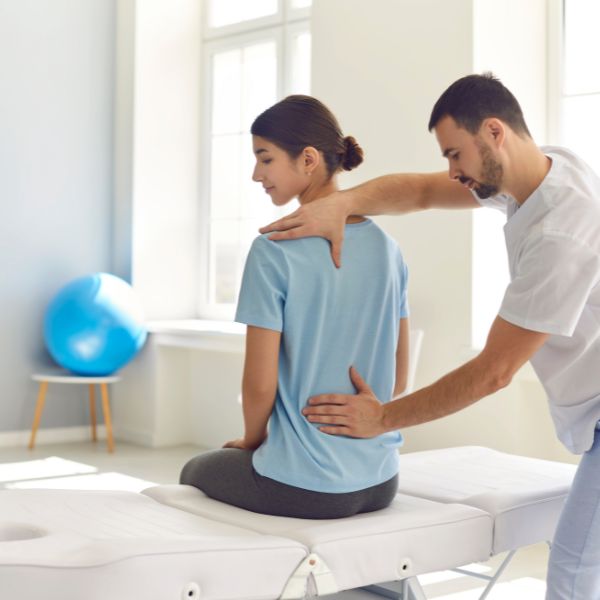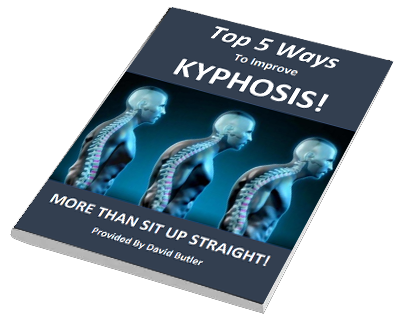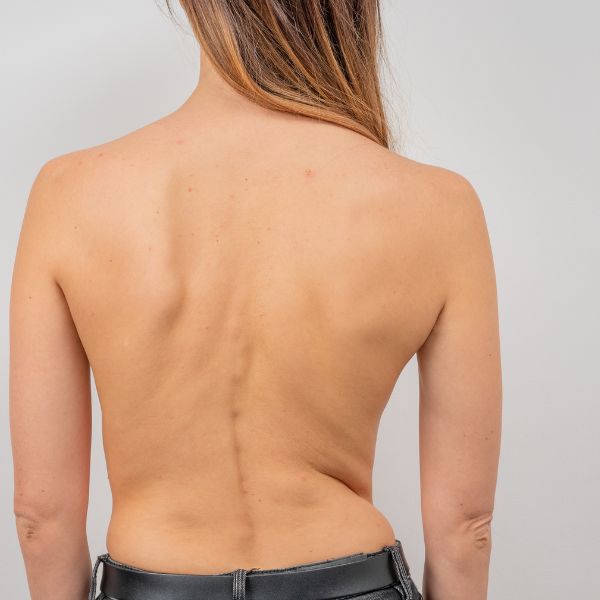Get Relief From Kyphosis Pain With Our Expert Physical Therapy Care
- Conveniently located in Lehi, Utah
- 230 North 1200 East, #103, Lehi, UT 84043
- Monday - Thursday - 7.00am - 6.00pm
- Friday - 7:00am - 5.00pm


Download Your FREE Kyphosis Pain Guide:
Top 5 Ways To Improve Kyphosis
- Click the button below to get your FREE Guide
Physical therapy care along with specialized treatments for patients of all ages.
Does any of this sound familiar?
- Do you experience kyphosis pain when you get up in the morning or after sitting for a while?
- Have you visited multiple clinics, but still can't find relief from your kyphosis pain?
- Have you invested a lot of money in treatment that didn't alleviate your kyphosis pain?
- Are you avoiding exercise due to the fear of aggravating your kyphosis pain?
- Are you starting to worry that you'll never recover from your kyphosis pain and won't be able to enjoy the activities you love?
- Has a medical professional suggested that surgery, painkillers and injections are the next step in treating your kyphosis pain?
If you answered YES to any of the above, you may have found the answer to your kyphosis pain at Align Therapy, Utah
Got a Question?
Ask Align Therapy, Utah And Our Team Of Expert Physical Therapists
What Causes Kyphosis Pain?... And Why is My Kyphosis Pain Not Getting Better?
Here are the main causes of pain related to kyphosis:
Abnormal Spine Alignment
Muscle Fatigue and Strain
Poor Posture (Postural Kyphosis)
Degenerative Changes (Age-Related Kyphosis)
Nerve Compression
Emotional and Psychological Stress
Underlying Conditions
If your kyphosis pain isn’t getting better, it’s usually because the underlying structural or muscular imbalances haven’t been fully addressed, or the condition may be progressing. Here’s a breakdown of the most common reasons:
Underlying Structural Issues Aren’t Being Treated
Poor Posture Habits Continue
Weak Core and Back Muscles
Nerve Involvement or Spinal Stenosis
Inactivity or Inconsistent Therapy
Pain Centralization or Emotional Stress
Misdiagnosis or Overlooked Condition

Tired of Living with Kyphosis Pain? We Can Help

- Fill in the form to request a Call From Our Team Of Expert Physical Therapists
- One of our team members will call you for FREE and answer any questions or concerns you may have about your kyphosis pain
What Are The Symptoms of Kyphosis Pain?

Here are the common symptoms associated with kyphosis pain:
Rounded or Hunched Upper Back
Upper Back Pain or Discomfort
Muscle Fatigue or Weakness
Limited Flexibility or Mobility
Pain That Worsens with Activity or Poor Posture
Neck or Shoulder Pain
Nerve Symptoms (In Severe Cases)
Fatigue and Postural Difficulty
Is Physical Therapy Right For Your Kyphosis Pain?
- Our team at Align Therapy, Utah are experts in pain treatment, helping 100's of patients get back to the activities they love with relief from their pain.
Here’s just a few of the things our Team can do for you:
- We can help quickly relieve your pain and stiffness, often within just a couple of sessions.
- On day one, we can inform you of what you have, why you have it, and how to get rid of it, so you can feel confident and informed about your treatment.
- We can help you discover what's truly causing your shoulder pain and address the root issue, sometimes in as little as 20 minutes.
- Our treatments can help give you more energy to enjoy each day to the fullest.
- We can help you say goodbye to taking harmful painkillers long-term and find a more effective solution.
- Our treatments can help you avoid surgery and painful injections.
- We can help you skip the doctor's waiting room and avoid repeated visits to get more prescriptions.
- We want to help you reclaim the quality time with family and friends that your shoulder pain may have taken away.
- Our goal is to help you stay active and enjoy a fulfilling life, free from the curse of your shoulder pain.
What’s next? You’ve got a decision to make – another month gone without solving your back problem, or are you ready to get back to doing the things you love?
Why Patients Choose Us:
Having served the people of Lehi, UT and receiving overwhelming feedback from patients as to why they choose us include:
- Award Winning Patient Care
- Early morning and evening availability
- Gentle, safe and effective health care
- Free Discovery Visits
- Highly trained and caring staff
Frequently Asked Questions About Kyphosis Pain
Kyphosis is an excessive forward curvature of the spine, commonly in the thoracic (upper back) region. Pain may result from muscle strain, nerve compression, spinal degeneration, or associated conditions like osteoporosis or Scheuermann’s disease.
People often describe kyphosis pain as:
A dull ache in the upper or mid-back
Muscle fatigue or tightness
Sharp pain (especially if nerves are involved)
Increased discomfort after long periods of sitting or standing
Yes. Severe kyphosis can compress spinal nerves, potentially causing:
Radiating pain
Tingling
Numbness in the arms or legs
It depends on the cause and severity:
Postural kyphosis pain often improves with exercise and posture correction.
Structural kyphosis (e.g., from degenerative disc disease or Scheuermann’s) may cause chronic pain without treatment.
Doctors typically use:
Physical exams
X-rays or MRI scans
Neurological evaluations (if nerve symptoms are present)
Treatment options include:
Physical therapy
Posture correction
Pain medications (NSAIDs)
Bracing (especially in adolescents)
Surgery (in severe or progressive cases)
Yes. Exercises that strengthen the back and core muscles, improve posture, and increase flexibility often reduce pain. Examples include:
Back extensions
Yoga
Thoracic mobility exercises
Surgery may be considered when:
The curve is severe (>70-80 degrees)
Pain is disabling
There’s nerve compression
Conservative treatments fail
In severe cases, yes. The spinal curve can reduce lung capacity or compress abdominal organs, leading to:
Shortness of breath
Digestive discomfort
Helpful adjustments include:
Improving posture at work and home
Using ergonomic furniture
Maintaining a healthy weight
Staying active with low-impact exercise
Are You Struggling With Kyphosis Pain? Take Us Up on One of Our FREE Options

© Copyright Align Therapy, Utah. All Rights Reserved.